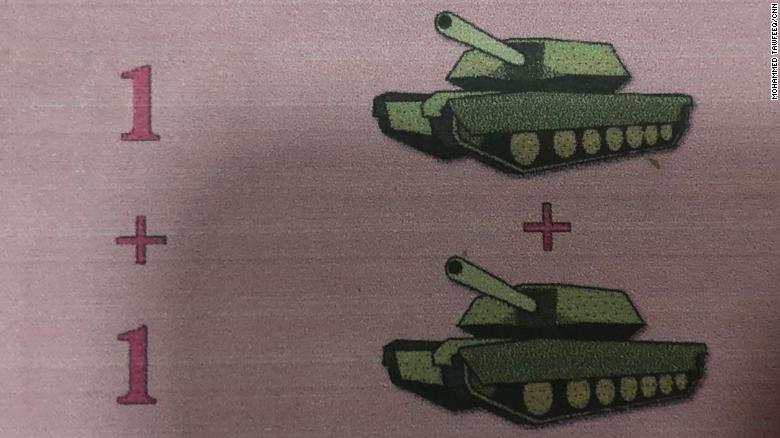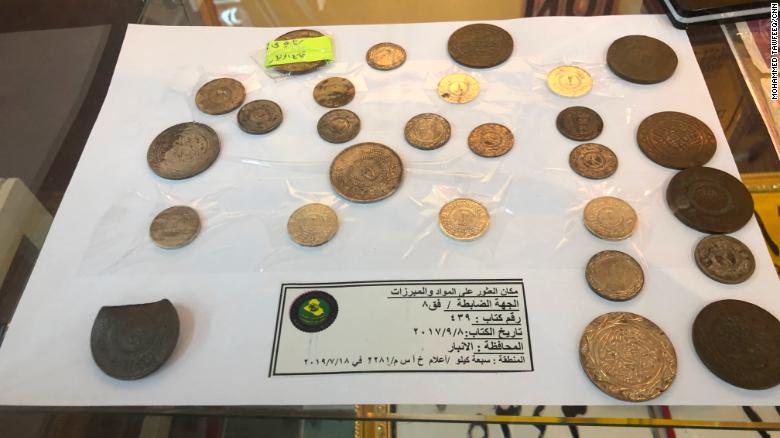The staggering brutality of ISIS, what the terrorists called the “management of savagery,” was meticulously recorded and posted on the internet to morbidly fascinate the world and ensure absolute obedience in the regions under its control.
ISIS’s reach was massive, they covered a territory the size of the United Kingdom with up to 12 million people in it but it’s the small things in the museum, the Nazi-like obsession with records, files, and documentation, that send the visitor reeling.
Primary school books teach arithmetic by counting AK-47s. Trigonometry is explained in the context of a sniper working out the range to his human target. Children were more deeply indoctrinated with every year that passed.

And that takes me back to my own childhood, in Saddam Hussein’s Iraq. Every day in school, before we started any class, all children were forced to chant “Long Live Saddam!” We were taught he was always right, that he was the savior of the Arab world and our schoolbooks were all about glorifying Saddam and his Baath party.

Like ISIS, Saddam was obsessed with children following the rules he created. The strategies of ISIS and Saddam are pretty similar, and indeed many ISIS leaders had once been Saddam loyalists. They brought to Iraq a different level of horror, that is still painful to remember.
The caliphate minted its own coins. It pressed its own vehicle license plates. It was preparing to issue passports.

Shunned by the world, ISIS “citizens” would have been unable to travel on them but they show the degree to which this organization had pretensions to statehood.
It would have been a state built on blood, terror and sexual slavery.
In an exhibit called “Sexual Jihad,” there’s a copy of a schedule for young male volunteers wanting to have sex with a woman either a sex slave or a devoted woman wanting to, literally, give her body to the caliphate.
ISIS called for “soldiers” online and in videos posted all over social media. They were able to recruit many foreign fighters who traveled from other countries to join.
Many were disillusioned young Muslim men and women, longing for understanding and acceptance of their religion in countries where they felt out of place. Young men, especially, were lured to the Middle East with the improbably heady mix of absolute religious certainty, the license for almost unlimited violence and regular pay.
Files on foreign fighters captured from ISIS show how their recruiters recorded these “soldiers of the Caliphate” as having only a “rudimentary” understanding of Islam.
Yet photographs and videos in the museum show how they had freedom to commit heinous crimes, to kill and to rape, in the name of religion.
Intelligence officials say documents show how vast sums were generated for the caliphate through the sale of smuggled oil and archaeological treasures, as well as from local taxes and revenue from agriculture, much of it on land stolen from Yezidis, Shias and anyone who fell afoul of the regime.

